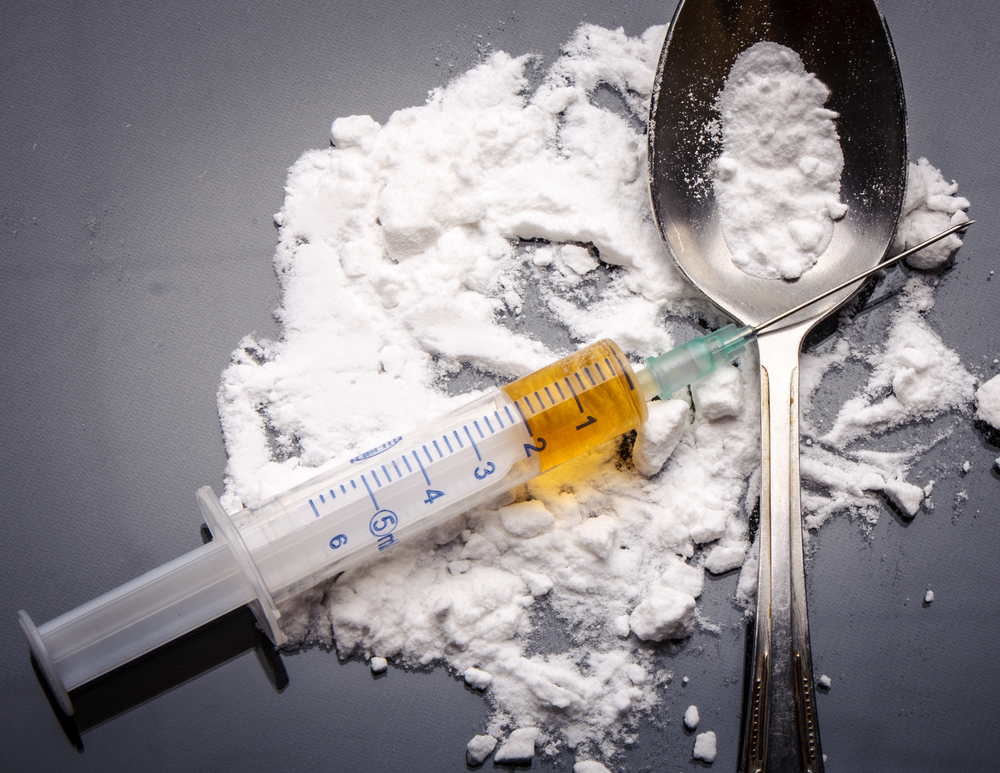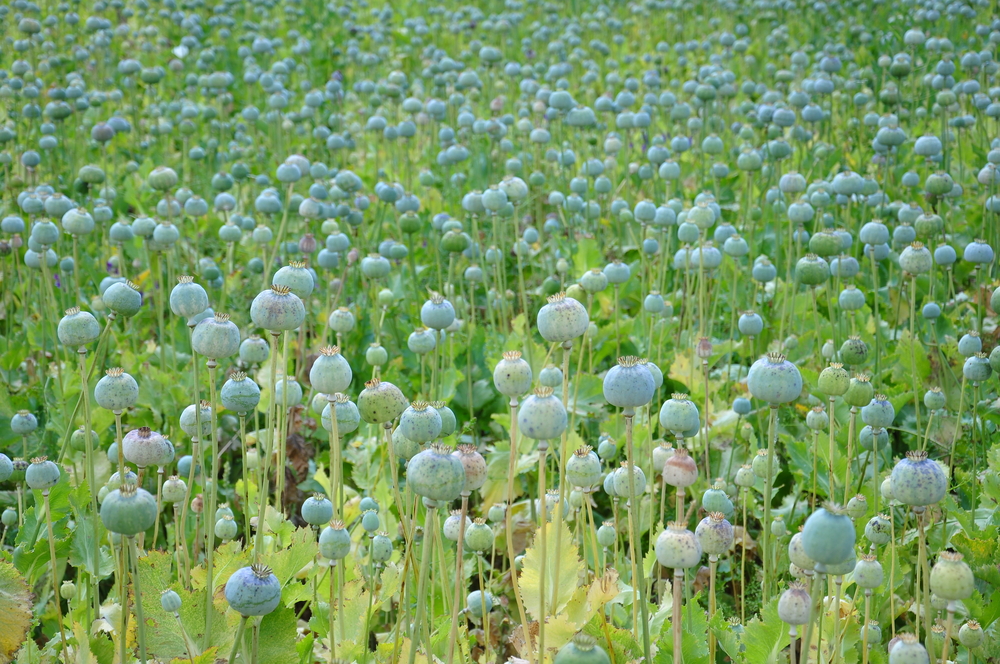Heroin Facts: Effects, Addiction & Treatment

Heroin is an opiate drug derived from morphine, which is itself obtained from the opium poppy plant (Papaver somniferum). Techniques vary, but most growers use either the seedpods or the straw chaff of the flowering plant to extract a light-brown powder containing concentrated morphine.
Opium poppies and their derivatives — including the painkillers codeine and laudanum, the cough-suppressant noscapine, as well as morphine — have been renowned throughout human history.
Neolithic burial sites in Spain show evidence of poppy use. The first recorded reference to opium comes from 3400 B.C., when the opium poppy was grown in Mesopotamia, according to the Drug Enforcement Agency (DEA). The ancient Sumerians referred to the poppy as hul gil (the "joy plant"), and ancient Egyptian, Greek, Minoan and Sanskrit texts document the use of poppy-derived medicines.
In the early 1800s, the Opium Wars resulted when British merchants attempted to correct a trade imbalance with China by flooding the Asian nation with cheap opium, which resulted in widespread addiction. Chinese officials attempted to halt the trade in opium, but invading British troops forced China to accept open trading policies — including opium imports — with European powers. According to Humberto Fernandez and Therissa A. Libby, authors of "Heroin: Its History, Pharmacology and Treatment" (Hazelden, 2011), by 1900, China had 13.5 million addicts consuming 39,000 metric tons of opium per year.
The poppy plant grows in mild climates around the world: Afghanistan produces the most opium poppies, but the plant is also cultivated in Mexico, Columbia, Turkey, Pakistan, India, Burma, Thailand, Australia and China.
An accidental discovery
Morphine was first extracted from opium resin in 1803; it quickly gained popularity among doctors as a painkiller, and was used widely in the U.S. Civil War and other conflicts.
In 1898, while using morphine to synthesize codeine — an opiate less potent and less addictive than morphine — chemist Felix Hoffman combined morphine with acetic anhydride and accidentally created heroin (diacetylmorphine), which is several times more potent than morphine.
Get the world’s most fascinating discoveries delivered straight to your inbox.
Hoffman's company, which eventually grew to become the pharmaceutical giant Bayer, marketed diacetylmorphine as "Heroin" based on its supposed heroic qualities. The company promoted its new product as a safer painkiller than morphine, until it was discovered that heroin rapidly metabolizes into morphine in the body.
The United States and most other countries eventually banned heroin; it's now listed under the U.S. Controlled Substances Act as a Schedule I narcotic, which means it's considered to have no medical benefit and a high potential for abuse, according to the DEA.
The addictive narcotic can be a white or brown powder, or black sticky substance known as "black tar heroin," said Dr. Scott Krakower, an assistant unit chief of psychiatry at Zucker Hillside Hospital in Long Island, New York.
Taking the drug can lead to euphoria, and is often accompanied with a dry mouth, flushed skin, a feeling of heaviness in the extremities and clouded thinking, according to U.S. National Institute on Drug Abuse(NIDA). Because heroin stimulates the reward pathway of the brain, people often return to the drug to get a pleasurable feeling, NIDA reported.
"It gives people an immediate rush or a high, and ultimately can be deadly," Krakower told Live Science.
How heroin works
Heroin is known by street names including "horse" and "smack." Its is often cut with substances such as powdered milk, sugar, starch, quinine or other impurities, according to the DEA. (A drug may be mixed with other compounds so the dealer can make more money on a small amount of heroin, or to give the user a better high, Krakower said.)
In powder form, heroin can be inhaled, "snorted" into the nostrils or smoked, Krakower said. Many, however, prefer to inject a liquid form of the drug, as this method can result in a faster, more-intense high, he said.
Like other opioid-based painkillers, heroin binds to opioid receptors in the brain and spinal cord, especially to receptors that are located along the reward pathway, such as the nucleus accumbens, according to NIDA.
The binding results an intense "rush" of euphoria and freedom from pain, followed by a warming sensation and the drowsy sense of well being typical of opioid painkillers, Krakower said. This high can last for several hours, depending on the strength of the dose.
Side effects of heroin
In addition to impaired mental functioning from the high it causes, heroin use can lead to tolerance, in which users need more of the drug to reach the same level of euphoria. Repeated use can also lead to dependence, in which people continue to use the drug so they can void withdrawal symptoms, according to NIDA.
Heroin use is associated with deteriorated white matter in the brain, which may harm people's abilities to make decisions, regulate their behavior and respond to stressful situations, NIDA reported.
The drug also causes constricted pupils, nausea, constipation, muscle spasms and a slowed pulse and rate of breathing, according to the DEA.
In high doses, heroin can result in convulsions, a dangerously low pulse, blue lips and fingernails, clammy skin, a coma or even death, according to the U.S. Substance Abuse and Mental Health Services Administration (SAMHSA). The drug's depressive effect on respiration can cause slow, shallow breathing that may, in the case of an overdose, stop altogether — the cessation of breathing is a leading cause of death among heroin users.
"Physiologically, over the long run it can cause trouble with breathing and kidney function," Krakower said. "If you're using it intravenously, it can cause collapse of blood vessels."
Injection of heroin — particularly with shared needles — has also been associated with the spread of blood-borne pathogens, including hepatitis and HIV/AIDS, according to the National Institutes of Health(NIH).
Additionally, heroin can be cut with any number of toxic impurities, including fentanyl, another opioid painkiller that can greatly increase the potency of heroin, according to NIDA.
Treatment for heroin use
Heroin has been rising in popularity in recent years. In 2011, an estimated 4.2 million Americans (or 1.6 percent), aged 12 or older reported that they have tried heroin at least once in their lives, according to NIDA.
Death from heroin overdose almost quadrupled from 2000 to 2013, from 0.7 to 2.7 deaths per 100,000 people in the United States, according to the Centers of Disease Control and Prevention.
However, not everyone becomes addicted to it, as environment and personality play a role in addition, according to NIDA. About 23 percent of people who have tried heroin become dependent on it, NIDA reported.
Treatment for heroin addiction often includes behavioral counseling and medical therapies, including the regulated use of methadone, a synthetic opioid that has varying degrees of success at treating opioid addictions.
"Methadone is a fairly effective treatment agent," Krakower said. "It's also a narcotic, but it acts on the receptors in such a way that someone doesn’t feel like they have to get high on heroin."
People usually have to visit a clinic to get methadone, but treatment regimens and lengths vary. "Patients can be on it for years," Krakower said. "They go on methadone and sometimes they stay on it for life."
The side effects of methadone, like other opioid agents, include sedation, constipation, pupil constriction, difficulty breathing and constipation, Krakower said. Other medications, such as laxatives, can help, he said.
Buprenorphine (brand name: Subutex), and buprenorphine and naloxone (Suboxone) can also treat opioid drug addition by preventing withdrawal symptoms when a person stops taking heroin, according to the NIH. Another drug, Naltrexone, can help reduce cravings by blocking the effects of heroin, the NIH said.
Naloxone (Narcan), which blocks the opioid receptors, can also be used to save someone during an overdose, Krakower said. It can be injected intravenously or intramuscularly, and is now available as a nose spray, according to the NIH. If someone is experiencing a heroin overdose, call 911, Krakower said.
Without the help of most drugs, withdrawal from heroin use can be a difficult and lengthy process — symptoms can include extreme pain, insomnia, nausea, vomiting and diarrhea, according to the NIH.
People can find therapy for heroin by visiting the SAMHSA Behavioral Health Treatment Services Locator, Krakower said.
Additional reporting by Marc Lallanilla, Staff Writer.
Follow Laura Geggel on Twitter @LauraGeggel. Follow Live Science @livescience, Facebook & Google+.
Additional resources
- Read about the effects heroin has on your health at the National Institute of Drug Abuse.
- Learn more about Naloxone, the medication that can save someone during an overdose.
- See why Philip Seymour Hoffman didn't have to die after his heroin overdose, according to Time.
 Live Science Plus
Live Science Plus






